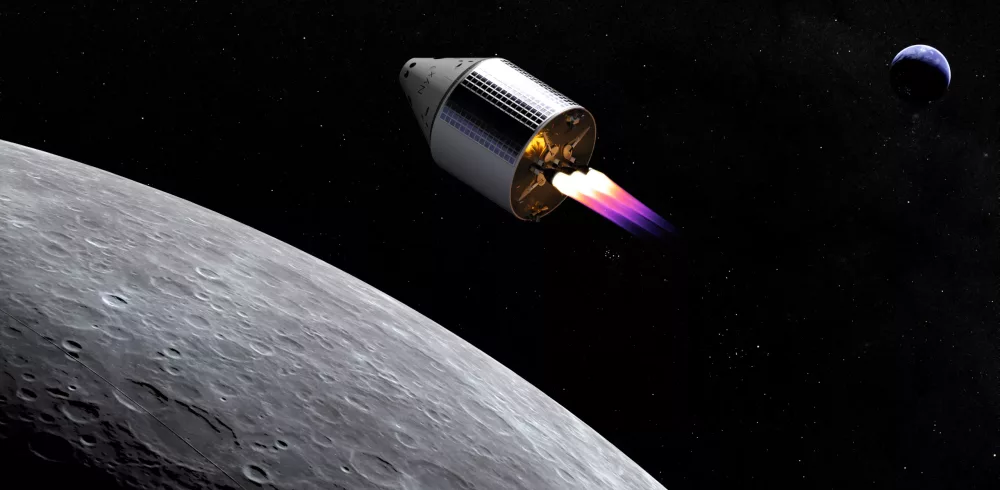The Exploration Company wants to offer commercial space missions in the future // TRUMPF is contributing production technology as well as manufacturing and application expertise to the cooperation // Metal 3D printing enables space companies to manufacture key components on an industrial scale
Ditzingen/Planegg/Bordeaux, 25 January 2024 – The German technology company TRUMPF and the European space-travel start-up The Exploration Company are cooperating on the construction of core components for spacecraft for missions in the earth’s orbit and to the moon. As early as spring 2024, the Exploration Company will use 3D printers from the laser specialist to print core components of the Huracán and Mistral engines for the Nyx Earth and Nyx Moon spacecraft in Planegg near Munich. The aim is to make the Huracán engine reusable and refuelable in orbit with bio-methane and oxygen. “Our aim is to offer space missions more cost-effectively than was previously possible. Our spacecraft can benefit from TRUMPF’s manufacturing and application expertise. TRUMPF has decades of experience in the production of high-precision components,” says Hélène Huby, CEO of The Exploration Company. The start-up plans to send a space capsule to orbit the earth for several months in an initial mission in 2026. Starting in 2028, further missions are planned to go to the moon. The spacecraft will initially carry freight, but in the long term, people will also fly on board.
The start-up has so far raised 65 million euros from private and public investors. The European company employs a total of around 120 people at its sites in Planegg near Munich and Bordeaux. Commercial space travel is considered a growth industry. Experts predicted that the global market for the production of aircraft and spacecraft would grow to 740 billion euros in 2023.
Aerospace companies rely on 3D printing
“With our 3D printing technology, we are driving the commercialization of the space-travel industry. If you want to be successful in the space-travel industry today,
you have to use additive manufacturing,” says Tobias Brune, who is responsible for the additive manufacturing business at TRUMPF. Designers use additive manufacturing to combine entire assemblies into a single component. This saves weight and reduces complexity. Every gram saved reduces fuel costs. What’s more, the less complex components reduce the cost of safety tests before the rocket launch and increase the probability of a successful mission in space.
With the help of 3D printers, The Exploration Company saves valuable raw materials. The systems only use the material that will ultimately fly into space. In the past, aerospace companies produced components using conventional manufacturing methods such as stamping, forging and casting. Much of the material ended up as waste.
Additive manufacturing enables rapid prototype development, which normally takes a lot of time in the aerospace industry. With the design software, users can make improvements to the prototype at the click of a mouse. The 3D printer can then produce the new prototype within a few hours. With conventional manufacturing methods, the production of some of these complex geometries would not be possible or it would take up to several weeks or months.
Digital photographs in print-ready resolution are available to illustrate this press release. They may only be used for editorial purposes. Use is free of charge when credit is given as “Photo: TRUMPF”. Graphic editing – except for cropping out the main motif – is prohibited. Additional photos can be accessed at the TRUMPF Media Pool
Manufacturing & Engineering Magazine | The Home of Manufacturing Industry News















